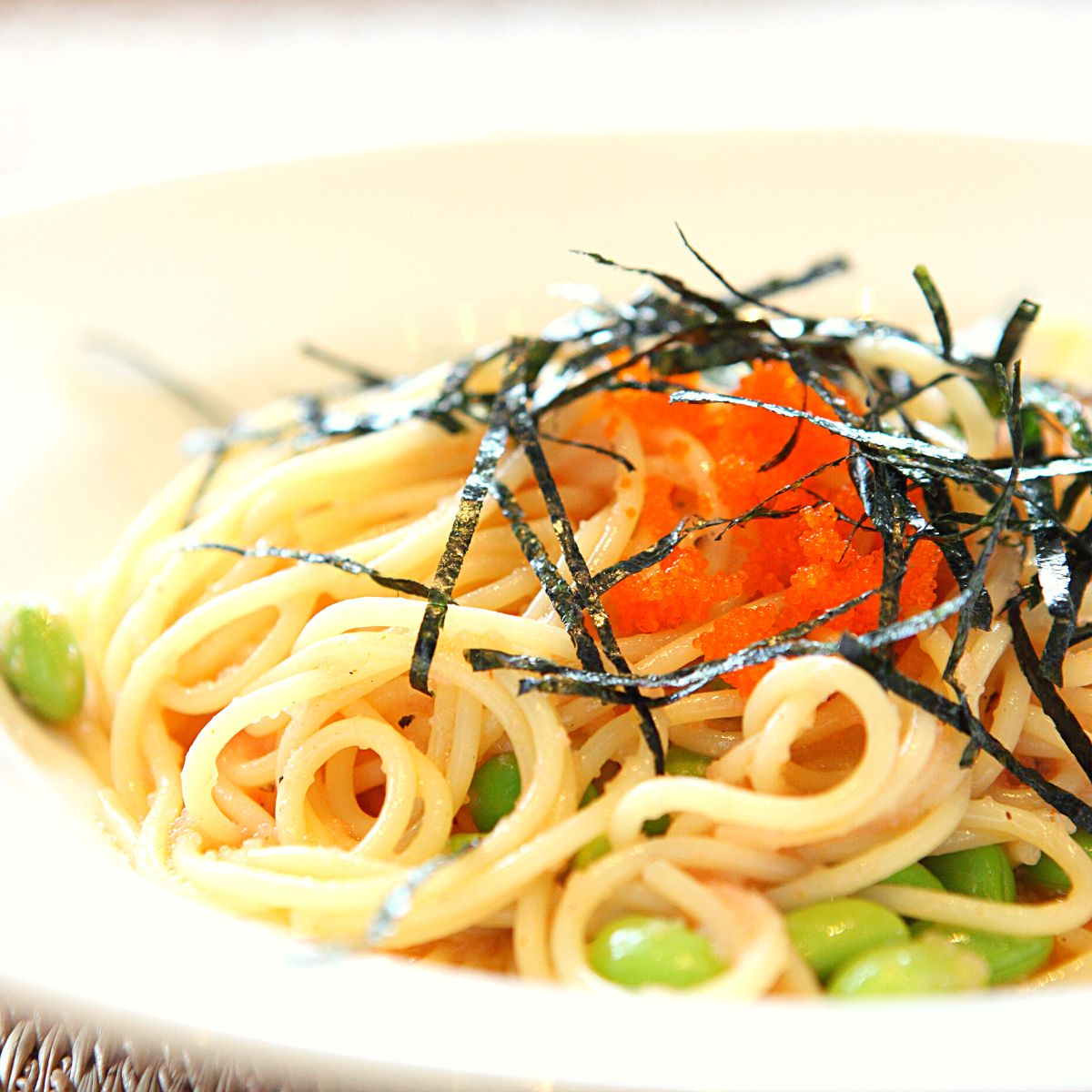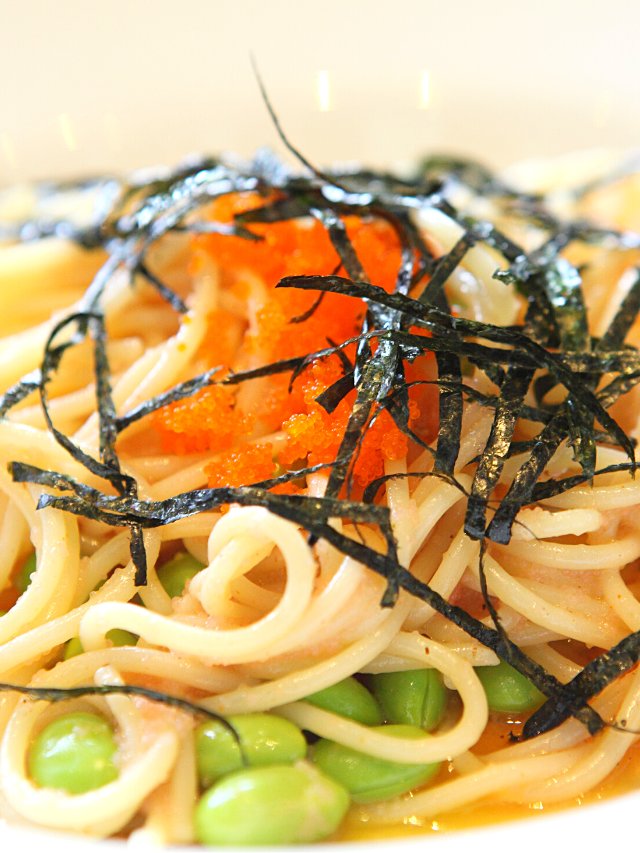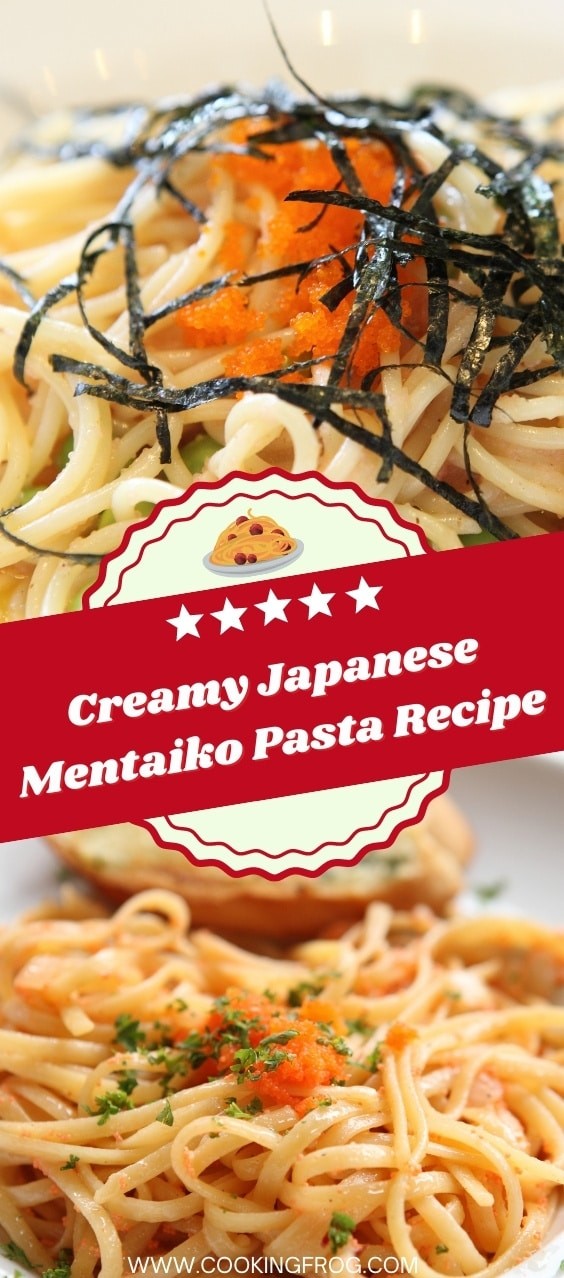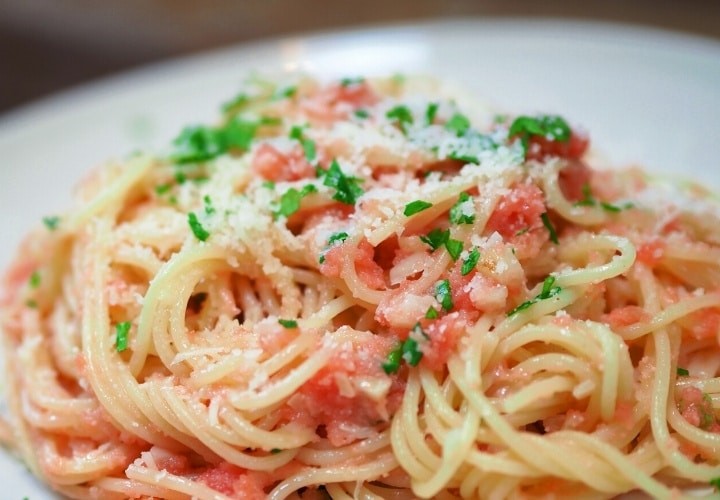This Creamy Mentaiko Pasta recipe is a delectable cod roe pasta made in the signature style of Japanese cuisine that just requires a few simple ingredients. It’s understandable why this new classic has become a staple in Japanese households, given that it boasts a thick, creamy sauce that is bursting with umami.
What is Mentaiko?
Mentaiko, also known as Karashi Mentaiko, is a hot pollock or cod roe that originates from Korea (Myeongnan-Jeot is the Korean version). After World War II, Toshio Kawahara, who was born in Busan, Korea, under the Japanese occupation, established “Aji no Mentaiko Fukuya,” the oldest Mentaiko organization in Japan. He brought Myeongnan-jeot to Tokyo as Karashi Mentaiko after making minor adjustments to Myeongnan-Jeot to suit Japanese preferences.
Similar to pickled vegetables, Mentaiko is frequently eaten as a side dish with steaming rice, as a topping for ramen and Ochazuke, or as a filler for onigiri (rice balls). It has a distinctively salty flavor and texture that gives bland dishes a lot of flavors. I tasted Mentaiko with kombu from Hirosho during a vacation in Japan (Naturally I had to try most of the Japanese cuisine), and it was great with rice.
For Mentaiko, there are several flavor and color variants. They come in a variety of tastes, from simply salted to yuzu, kombu, and hot chili. Mentaiko is a specialty that comes from Hakata (a district of Fukuoka City) and is hugely well-liked in Japan.
Ingredients
- 3.5 oz of Karashi Mentaiko (90 grams or about 2 pieces)
- 2 TBSP of olive oil
- 4 TBSP of half and half (half milk, half cream)
- 2-3 tsp of Parmigiano Reggiano (grated)
- 7 oz of dry spaghetti (200 grams)
- ¼ sheet of nori (cut with scissors into thin strips, for garnish)
- 3 thinly sliced green shiso leaves (for garnish)
Instructions
Prepare the Pasta:
- Fill a pot with 5 cups of water and add 1 TBSP of salt.
- Bring the water to a boil.
- Cook the pasta as directed on the package.
Prepare the Mentaiko Sauce:
- Locate the whole mentaiko roe sacks, which are coated in a robust outer membrane.
- Carefully puncture one end of the roe sack.
- Over a basin, squeeze out the roe from the membrane, similar to how you’d squeeze toothpaste.
Add Ingredients to the Sauce:
- To the basin with the roe, whisk in the following ingredients:
- Parmigiano Reggiano
- Half-and-half
- Olive oil
Combine Pasta and Sauce:
- Once the pasta is cooked, drain the water.
- Immediately add the drained pasta to the dish containing the Mentaiko sauce.
- Toss the pasta thoroughly to ensure it’s fully coated with the sauce.
Serving the Dish:
- Using tongs, a small dish, or a ladle, plate the pasta.
- Garnish the top with shiso and nori.
Got a craving for some quirky pasta? 🍝 Toss this Mentaiko masterpiece onto your Pinterest board and let your followers drool a little! 😋
Tarako vs Mentaiko
The roe (eggs) of an Alaskan pollock-type of cod is used to make the traditional Japanese dishes Tarako and Mentaiko. Similar to a sausage skin, a thin edible membrane holds the eggs together. Both Tarako and Mentaiko can be eaten cooked or raw, although neither has a particularly fishy flavor.
Simple salt or brine seasoning is used on Tarako. Its color can range from light pink to crimson and is often produced using food coloring.
Contrarily, Mentaiko is spiced and seasoned with chilies. It frequently has a deep crimson color and is umami-rich. It can also be referred to as “Karashi Mentaiko” (辛子明太子), with Karashii meaning “spicy” in Japanese.
After the war, Mentaiko was introduced to Japan. Mentaiko was initially developed in the Korean peninsula. They gave it the name “Myeongtae,” from whence the term “Mentai” is derived.
The Japanese word “Mentaiko” literally translates as “Mentai’s child” however, “Ko” (子) is frequently used in recipes to denote the egg. Oyakodon (親子丼) , for instance, is a rice bowl with chicken and eggs.
By reducing the spiciness and pickling it, Mentaiko was further improved in Japan to suit Japanese preferences, giving rise to the Mentaiko we know today.
Various Mentaiko Dishes
Mentaiko is typically consumed as a side dish with rice or as a flavoring for several foods. Here are some well-known examples!
- Mentaiko Creamy pasta
- Mentaiko Salmon bowl
- Mentaiko Onigiri Rice Ball
- Mentaiko cup noodles
- Mentai Maki
- Hakata Mentaiko Tonkotsu Ramen
- Mentaiko Furansu (Small baguette with Mentaiko inside)
- Mentaiko gratin
FAQs
What is Mentaiko?
Mentaiko is a spicy cod roe that originates from Alaska.
What distinguishes Mentaiko from Tarako?
Mentaiko has more spices and is frequently spiced with chile to make it a little bit spicier than mentaiko, which is cod roe that has been brined or salted.
What flavor does Tarako have?
Tarako is filled with amazing flavors, and like Mentaiko it’s somewhat salty and not too fishy.
What flavor does Mentaiko have?
Because it’s the spicy variety of Tarako, it’s hot, salty, and full of umami. They vary around Japan and can be seasoned in various ways.
Where can I purchase Mentaiko or Tarako?
Unfortunately, outside of Japan, they may be rather difficult to locate. Locating a Japanese or Asian grocery is your best chance. You may also consider searching online.





